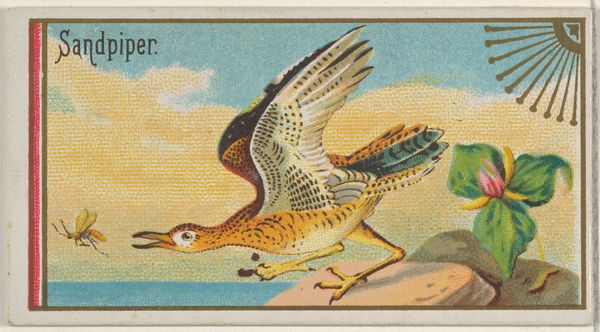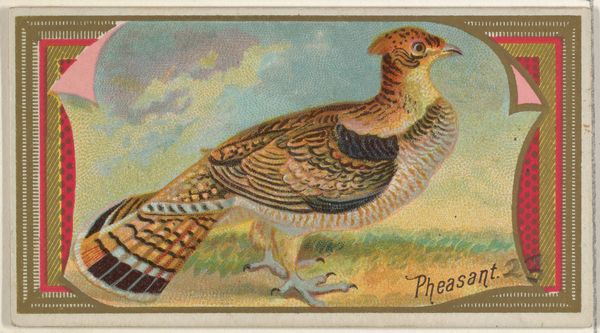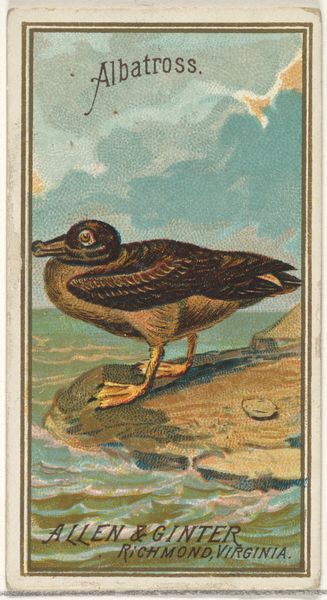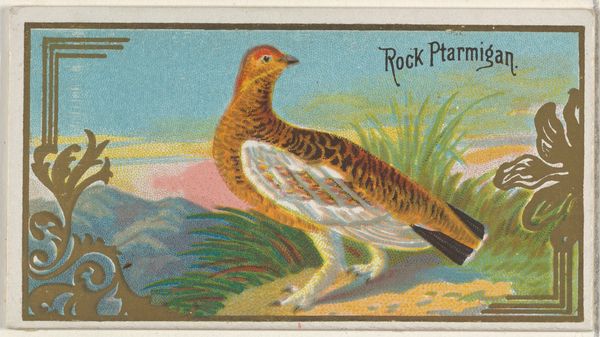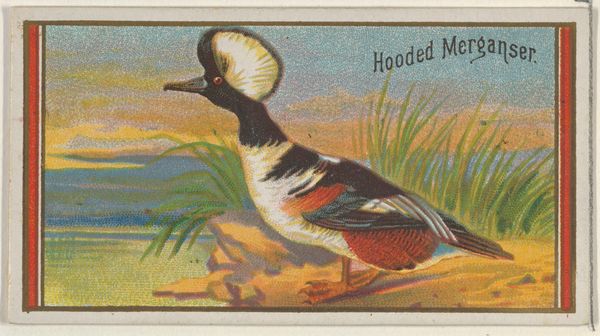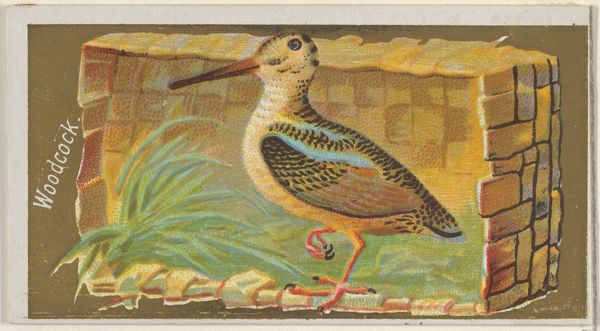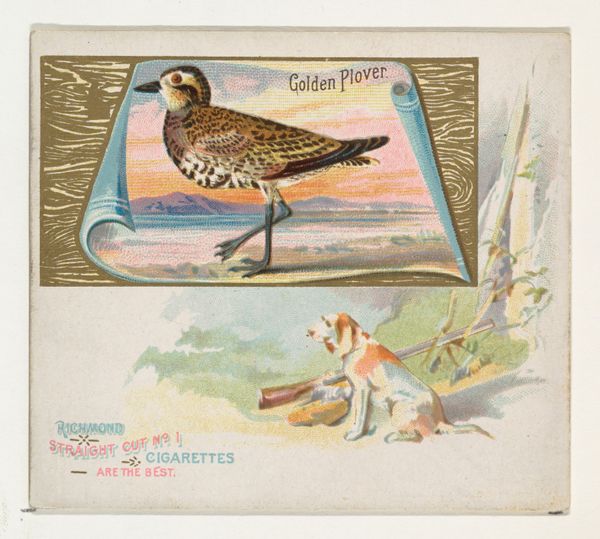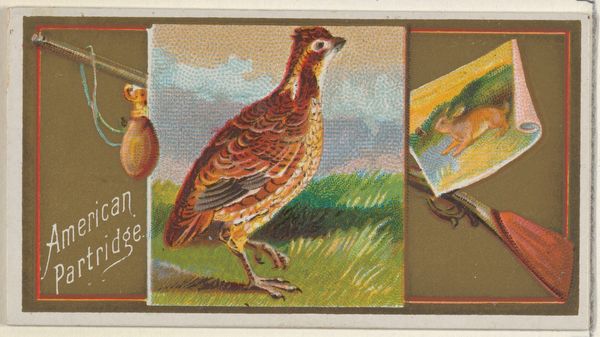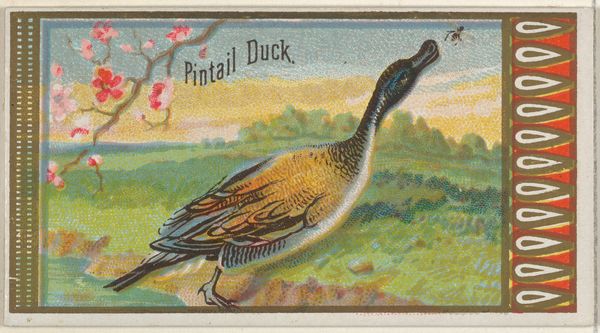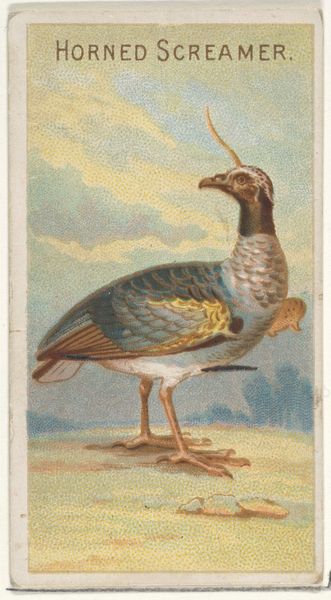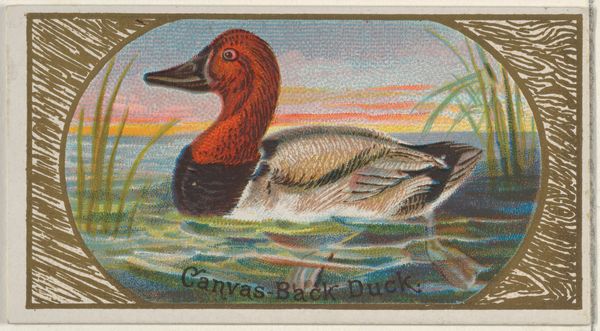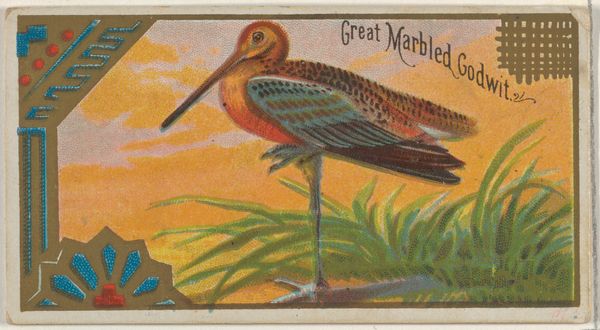
Golden Plover, from the Game Birds series (N13) for Allen & Ginter Cigarettes Brands 1889
0:00
0:00
Dimensions: Sheet: 1 1/2 x 2 3/4 in. (3.8 x 7 cm)
Copyright: Public Domain
Curator: Here we have “Golden Plover” from the Game Birds series, created in 1889 for Allen & Ginter Cigarettes. It’s rendered using colored pencil and watercolor. The presentation is so curious to me! Editor: Yes, there is a distinctive visual language at work here. I'm struck by the almost melancholic atmosphere. It feels very dreamlike, set against the backdrop of what seems like a faded sunset, and the bird seems isolated. Curator: That backdrop you mention appears to be a faux scroll unfurling, giving it the feeling of a captured moment in time, or a symbolic revelation. The Golden Plover itself has a rich symbolic life, connected to seasonal changes and migration, of course, but often portending transformation. Editor: Absolutely. Considering this was a cigarette card, its purpose was intertwined with leisure and consumption during the height of industrial capitalism. This card aestheticizes nature in a period when it was under increasing threat due to urbanization and hunting for sport. The Golden Plover, once incredibly abundant, had its population decimated due to hunting pressures. Curator: The context really enriches the visual symbols, doesn't it? Looking at the bird's depiction, I notice how its plumage is meticulously detailed. This bird rendered within this artificial, almost theatrical setting reinforces the emotional impact on the viewer, almost inviting a deeper look into both nature's beauty and the fragility. Editor: And that inherent contradiction speaks to the anxieties of the Gilded Age, when extreme wealth existed alongside social and environmental costs. The card romanticizes a lost pastoral ideal while simultaneously profiting from the very forces that endangered it. Curator: What a fascinating contrast, that a commercial enterprise such as Allen & Ginter would invest in promoting such images! One almost hopes they stimulated reflection amidst their customer base about the state of the natural world. Editor: I would argue that this points to how the marketing strategies operated by mediating cultural anxieties in this historical era. These commercial cards operated within complex ideological layers concerning class, labor, nature, and capital. Curator: I find that examining art through historical contexts always enhances and expands our experience. Thank you for shedding such light on it! Editor: The beauty of engaging with images lies in the intersectional stories they tell. Each perspective brings a unique texture to our understanding.
Comments
No comments
Be the first to comment and join the conversation on the ultimate creative platform.
